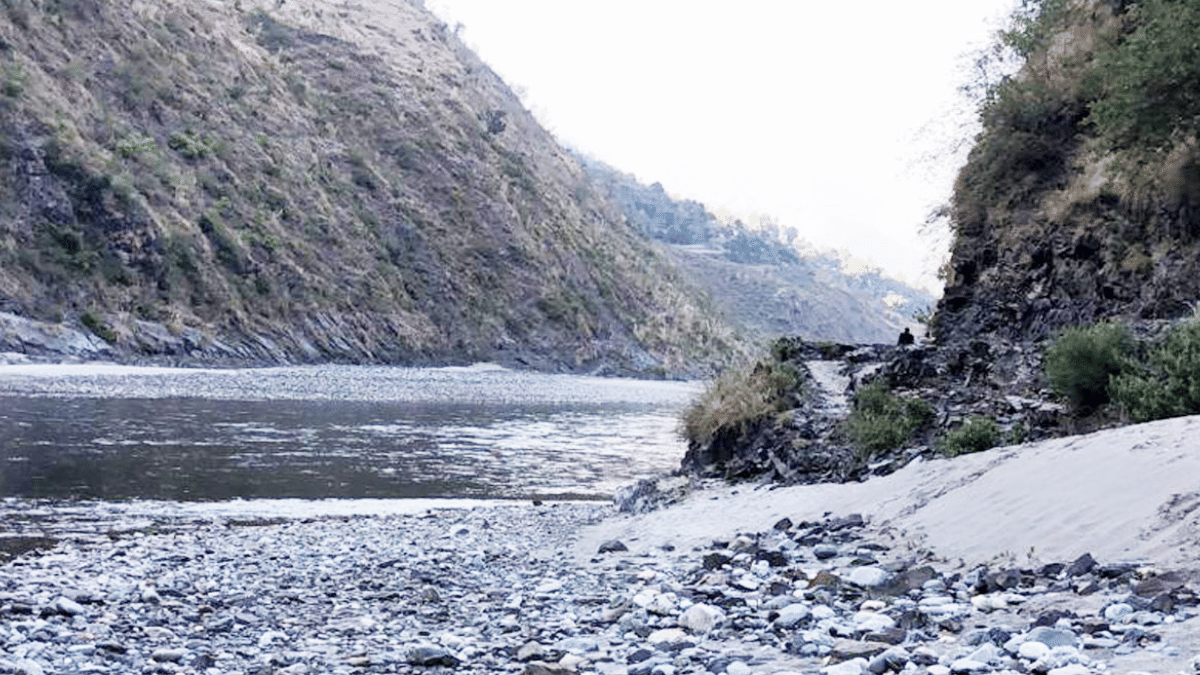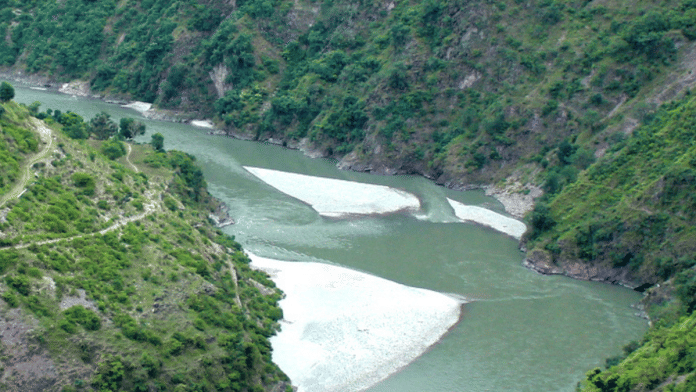Shimla: Himachal Pradesh Chief Minister Sukhvinder Singh Sukhu has toughened the state’s position on the long-delayed Kishau multipurpose project, which would benefit states and regions including Haryana and Delhi, saying the upstream state will not release water for the multipurpose project until the Bhakra Beas Management Board (BBMB) pays its arrears to the tune of Rs 4,200 crore.
Speaking to mediapersons in Kullu’s Banjar Wednesday, Sukhu said, “I went to Delhi (22 May) with the demands of the people of Himachal Pradesh. We will give water to Delhi and Haryana, but first they should give the BBMB arrears pending for 14 years to Himachal Pradesh.”
“I have clearly said that first the neighbouring states should file an affidavit in the Supreme Court to pay this arrear, then we will move forward on the Kishau dam.”
The Bhakra Beas Management Board, established under the Punjab Reorganisation Act, 1966, manages major hydropower projects, including the Bhakra-Nangal, Beas-Satluj Link and Pong Dam projects.
Also Read: 2 states, 2 dams & a political slugfest: The Nangal water sharing dispute between Punjab, Haryana
The arrear dispute
Himachal Pradesh, as a key contributor of land and water resources to these projects, has long claimed it has been undercompensated for its role. The BBMB arrears dispute centres on unpaid dues, primarily in the form of Himachal’s entitlement to a 7.19 percent share of power generated from these projects.
The stakeholder states in BBMB projects are Punjab, Haryana, Rajasthan, Himachal Pradesh, and the Union Territories of Delhi and Chandigarh. Himachal’s claim stems from the submergence of 45,000 hectares of its land for BBMB reservoirs, which displaced thousands of families and caused environmental impacts.
According to a 1979 report by K.S. Subrahmanyam, a former chairman of the Central Electricity Authority, Himachal’s share of power generated from these projects was determined at 7.19 percent as this was the percentage of Punjab’s population and territory at that time that went to Himachal under the 1966 Act.
Under this formula, a total of 13,066 million units of power from the three projects is owed to Himachal Pradesh.
In 2012, the state submitted a claim to the Union Ministry of Power about the Bhakra-Nangal project dues. According to the claim, the total dues owed to the state from this project alone is estimated at Rs 4,249.45 crore, the amount calculated using the BTPS (Busbar Thermal Power Station) rates—essentially the cost of power where it’s generated and available for transmission—prior to 1989 and average purchase rates thereafter.
Supreme Court ruling & Himachal’s efforts
In November 2011, a Supreme Court bench of justices R.V. Raveendran and A.K. Patnaik, upheld Himachal Pradesh’s entitlement to the 7.19 percent share of power from the Bhakra-Nangal Project (effective from 1 November, 1966) and the Beas project (from the dates of production in units I and II).
The court’s decision followed a prolonged legal battle, affirming Himachal Pradesh’s rights as a successor state under the Punjab Reorganisation Act. Despite the ruling, Punjab and Haryana have been reluctant to release the arrears.
Himachal Pradesh again moved the court in 2017 to get its decision executed. The SC asked the then attorney general to mediate. Meanwhile, Himachal intensified its efforts, sending a team of senior officials to Delhi to argue its case before the Supreme Court, where the matter was listed for hearing on 13 September, 2025.
Chief Minister Sukhu has also engaged with Union ministers to push for the release of the dues and secure a permanent representative for Himachal on the BBMB to ensure better representation in decision-making. Additionally, Sukhu has demanded a 12 percent free power royalty from BBMB projects, aligning with the state’s policy for other hydropower projects. This also remains a point of contention with the stakeholder states.
Also Read: Punjab slashing Haryana’s Bhakra canal water share triggers political row, Centre likely to mediate
Kishau project: Details and delays
The Kishau Multipurpose Dam Project, proposed to be built on Yamuna’s tributary Tons river in Uttarakhand’s Dehradun district, was envisaged as a collaborative project among Himachal Pradesh, Uttarakhand, Uttar Pradesh, Haryana, Rajasthan, and Delhi.
The project involves construction of a 236-metre-high concrete dam to generate 660 MW of hydropower, create an irrigation potential of 97,000 hectares, and supply 517 million cubic metres (MCM) drinking water annually.
When initially proposed, the estimated cost was around Rs 6,000 crore. However, due to delays and rising costs, the current estimated cost has escalated to approximately Rs 10,000 crore, according to central government assessments released last year.

Himachal Pradesh’s stand on the Kishau project has been cautious, prioritising the state’s financial and environmental interests. The state has demanded the project’s financial burden be borne entirely by the central government or the primary beneficiary states—Delhi, Haryana, Uttar Pradesh and Rajasthan—given Himachal’s significant contribution of water resources.
Sukhu reiterated this position during a meeting with Union Jal Shakti Minister C.R. Paatil on 22 May, 2025, emphasising the need for a favourable funding pattern to protect Himachal’s rights.
The project was initially supposed to be completed by the mid 2010s. The delay of about a decade stems from multiple factors: inter-state disagreements over water and power sharing, funding-related disputes, and bureaucratic hurdles, among others.
Environmental concerns, the potential displacement of local communities and ecological impacts have also necessitated extensive assessments, adding to the delay.
A Kishau Corporation Limited official told ThePrint, “The Kishau dam is critical for addressing water scarcity in Delhi and Haryana. Delhi, grappling with rapid urbanisation needs and population growth, stands to gain 517 MCM of drinking water annually, significantly alleviating its water crisis.
“Haryana, an agrarian state, will benefit from the irrigation potential of 97,000 hectares, boosting agricultural productivity. Both states will also gain access to a portion of the 660 MW hydropower generated, supporting their energy needs and contributing to India’s renewable energy goals.”
Earlier, addressing mediapersons in Shimla Sunday, Sukhu said he had met Jal Shakti Minister Paatil and Power Minister Manohar Lal Khattar to press Himachal’s case.
“I raised the concerns of Himachal Pradesh regarding the Kishau project and the pending BBMB arrears. We are committed to protecting the state’s rights and ensuring that our people are not shortchanged. The arrears must be cleared, and a fair funding pattern for Kishau must be established,” he stated.
During his discussions with Patil, Sukhu said, he reiterated the need for the Central government or beneficiary states to fully fund the Kishau project.
With Khattar, Sukhu pushed for the release of BBMB arrears, a permanent BBMB board seat for Himachal, and the transfer of the Baira-Siul project, operated by the National Hydroelectric Power Corporation (NHPC), to the state’s control.
A state government official, privy to the matter, told ThePrint, “Himachal’s stance on the Kishau project and BBMB arrears highlight the complexities of interstate resource sharing.
“While the state’s demands are rooted in a 2011 Supreme Court ruling and its significant contributions to BBMB projects, the reluctance of Punjab and Haryana to clear the Rs 4,200 crore arrears continues to delay resolution.”
(Edited by Ajeet Tiwari)






